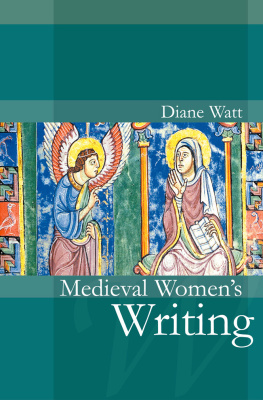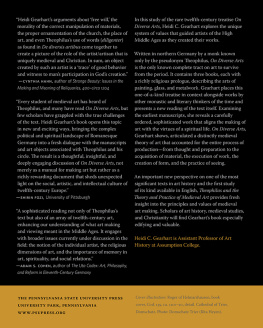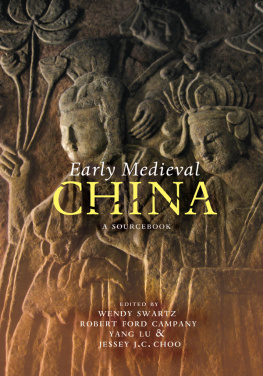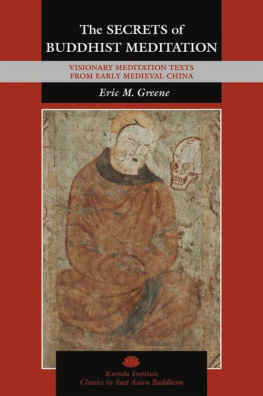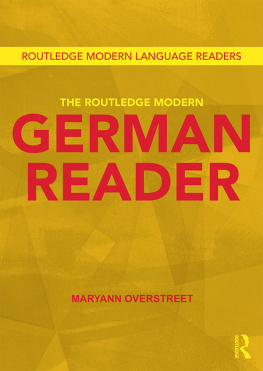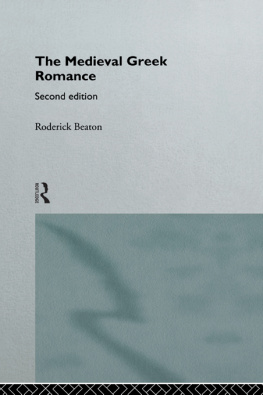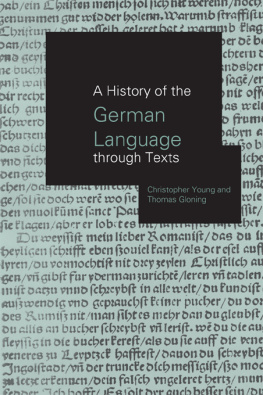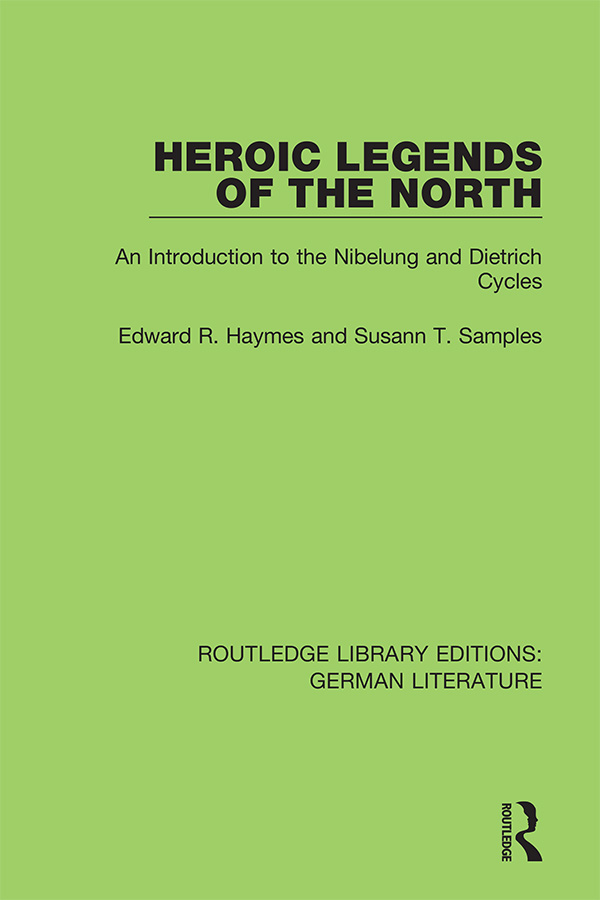ROUTLEDGE LIBRARY EDITIONS: GERMAN LITERATURE
Volume 18
HEROIC LEGENDS OF THE NORTH
HEROIC LEGENDS OF THE NORTH
GARLAND REFERENCE LIBRARY OF THE HUMANITIES VOLUME
1403
First published in 1996 by Garland Publishing Inc
This edition first published in 2020
by Routledge
2 Park Square, Milton Park, Abingdon, Oxon OX14 4RN
and by Routledge
52 Vanderbilt Avenue, New York, NY 10017
Routledge is an imprint of the Taylor & Francis Group, an informa business
1996 Edward R. Haymes and Susann T. Samples
All rights reserved. No part of this book may be reprinted or reproduced or utilised in any form or by any electronic, mechanical, or other means, now known or hereafter invented, including photocopying and recording, or in any information storage or retrieval system, without permission in writing from the publishers.
Trademark notice: Product or corporate names may be trademarks or registered trademarks, and are used only for identification and explanation without intent to infringe.
British Library Cataloguing in Publication Data
A catalogue record for this book is available from the British Library
ISBN: 978-0-367-41588-4 (Set)
ISBN: 978-1-00-301460-7 (Set) (ebk)
ISBN: 978-0-367-43984-2 (Volume 18) (hbk)
ISBN: 978-0-367-43988-0 (Volume 18) (pbk)
ISBN: 978-1-00-300693-0 (Volume 18) (ebk)
Publishers Note
The publisher has gone to great lengths to ensure the quality of this reprint but points out that some imperfections in the original copies may be apparent.
Disclaimer
The publisher has made every effort to trace copyright holders and would welcome correspondence from those they have been unable to trace.
Copyright 1996 by Edward R. Haymes and Susann T. Samples All rights reserved
Library of Congress Cataloging-in-Publication Data
Haymes, Edward, 1940
Heroic legends of the North : an introduction to the Nibelung and Dietrich cycles / by Edward R. Haymes and Susann T. Samples.
p. cm. (Garland reference library of the humanities ; vol. 1403)
Includes bibliographical references and index.
ISBN 0-8153-0033-6 (alk. paper)
1. German poetryMiddle High German, 1050-1500History and criticism. 2. Epic poetry, GermanHistory and criticism. 3. Old Norse poetryHistory and criticism. 4. NibelungenLegendsHistory and criticism. 5. Dietrich, von BernLegendsHistory and criticism.
I. Samples, Susann T. II. Title. III. Series.
PT204.H38 1996
830dc20 96-5800
CIP
Cover illustration: Sigurd Stabbing the Dragon Ffnir (from the Hylestad Stave Church) Museum of National Antiquities, Oslo, Norway.
Printed on acid-free, 250-year-life paper
Manufactured in the United States of America
ABG | Amsterdamer Beitrage zur lteren Germanistik |
AGSN | 'Waz sider da geschach:' American-German Shidies on the Nibebmgmlied. Eds. Werner Wunderlich and Ulrich Muller. Goppingen: Kiimmerle, 1992 Werner Wunderlich and Ulrich Miiller. Goppingen: Kiimmerle, 1992. |
BGDSL | Beitrage zur Geschichte der deutschen Sprache und Uteratur |
DVLG | Deutsche Vierteljahresschrijtfiir Uteraturnnssenschaji und Geistesgeschichte |
HH | Heldensage und Heldendichtung im Germanischen. ed. Heinrich Beck. Erganzungsbande zum Reallexikon der Germanischen Altertumskunde 2. Berlin: de Grnyter, 1988. |
HS | Hohenemser Studien zum Nibelungenlied, a special number of Montfort: Vierteljahresschrift Jur Geschichte und Gegemvart Vomrlbergs, 32 (1980). Pagination follows that of the single volume. |
I Nibelunghi | CoUoquio Italo-Germamco sulla tema I Nibelunghi. Atti dei convegm Lincei. Rome: Accademia Nazionale dei Lincei, 1974. |
JEGP | Journal oj English and Germanic Philology |
JFI | Journal of the Folklore Institute |
MGH | Monumenta Germaniae Historica |
MLN | Modern Language Notes |
MLR | Modern Language Retnen> |
PN | Nibelungenlied und KJage: Sage und Geschichte, Struktur und Gattung: Passauer Nibehtngengesprache 1985. Ed Fritz Peter Knapp. Heidelberg: Winter, 1987. |
PSMA | Poetry in the Scandinavian Middle Ages: The Seventh International Saga Conference. Ed. Teresa Paroli. Spoleto: Presso la sede del Centro Studia, 1990. |
WW | Wirkendes Wort |
ZDA | Zeitschrift Jur deutsches Altertum und deutsche Uteratur |
ZDP | Zeitschrift Jur deutsche Philologie |
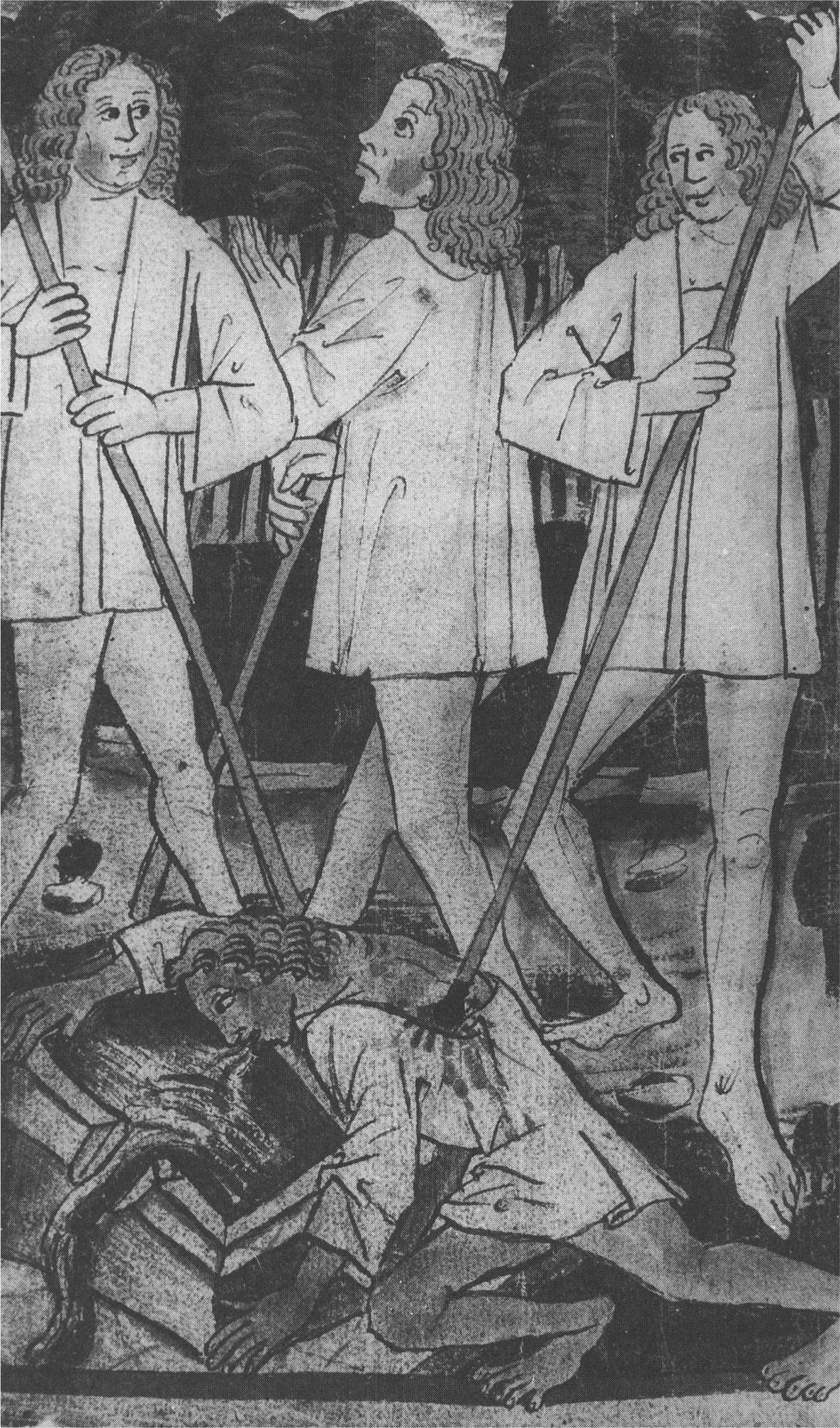
THE DEATH OF SIEGFRIED (From Lienhart ScheubePs Heklenbuch, 15th century) MS 15478, Folio 291 recto, Austrian National Library, Vienna.
Most English-speakers have a vague knowledge, probably derived direcdy or indirectly from Wagner, about the Nibelung legend, while the legend of Dietrich of Bern, certainly the most popular heroic material in medieval Germany, is largely unknown west of the English Channel. This book sets out to provide information for the general reader curious about these legendary matters and for the student setting out to find an entry into an often impenetrable secondary literature. The authors have sought to provide reliable information about the texts themselves and bibliographical guidance that will point the way into the published research on them.
This book sets out to trace its two major legendary topics from their historical roots during the last centuries of the Roman Empire to the medieval texts that make them known to us. There is no attempt to reconstruct lost literary versions or, except as an aid to orientation, to retell the stories in modem form. We have also decided to end the book with the last medieval versions of the material. A treatment of the Nibelung material from the eighteenth century to the present would be fascinating, but it would have unbalanced this book.
Many of the medieval texts have never been translated into English or even modem German. For this reason we have included a synopsis of each work so that the reader can form an idea of the content of the literary works in question.
There are many directions a study of Germanic heroic legend could have taken, but we have chosen a text-oriented approach that does very little in the way of situating the works in their social and political historical background. We have avoided theoretical issues that would have carried us beyond the scope of a handy orientation for readers and students. We have, however, included much in our bibliographical listings that will take the reader into the theoretical questions surrounding the study of these works.
One area of theory we could not avoid is the theory of oral poetic composition. This was necessary because few of our texts would have come into being without oral transmission and because the legends themselves are the product of an oral culture. Insofar as the theory of oral composition is still controversial, we have tried to cite scholarship offering views different from those presented here.


